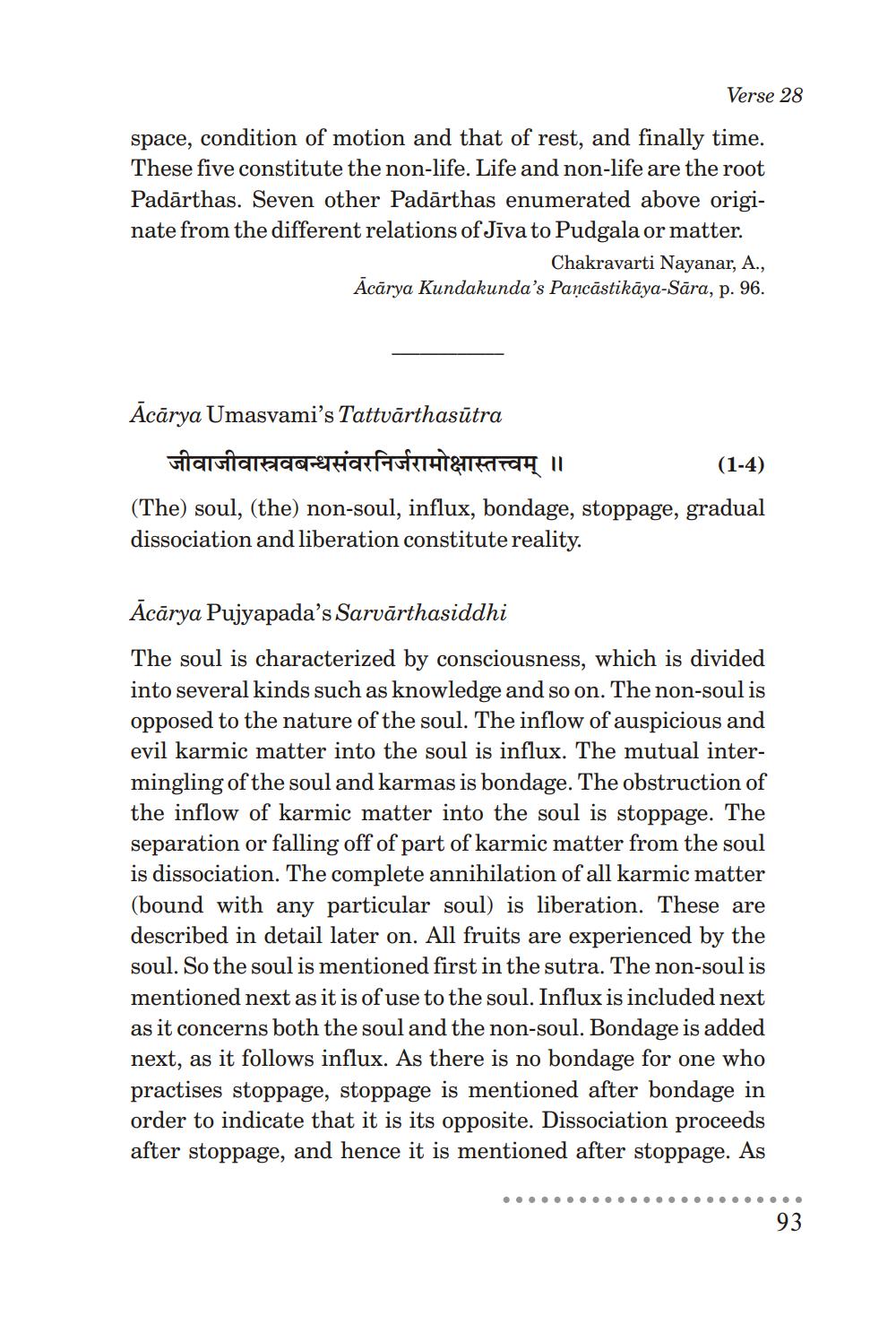________________
Verse 28
space, condition of motion and that of rest, and finally time. These five constitute the non-life. Life and non-life are the root Padārthas. Seven other Padārthas enumerated above originate from the different relations of Jīvato Pudgala or matter.
Chakravarti Nayanar, A., Acārya Kundakunda's Pancāstikāya-Sāra, p. 96.
Ācārya Umasvami's Tattvārthasūtra जीवाजीवास्रवबन्धसंवरनिर्जरामोक्षास्तत्त्वम् ॥
(1-4) (The) soul, (the) non-soul, influx, bondage, stoppage, gradual dissociation and liberation constitute reality.
Acārya Pujyapada’s Sarvārthasiddhi The soul is characterized by consciousness, which is divided into several kinds such as knowledge and so on. The non-soul is opposed to the nature of the soul. The inflow of auspicious and evil karmic matter into the soul is influx. The mutual intermingling of the soul and karmas is bondage. The obstruction of the inflow of karmic matter into the soul is stoppage. The separation or falling off of part of karmic matter from the soul is dissociation. The complete annihilation of all karmic matter (bound with any particular soul) is liberation. These are described in detail later on. All fruits are experienced by the soul. So the soul is mentioned first in the sutra. The non-soul is mentioned next as it is of use to the soul. Influx is included next as it concerns both the soul and the non-soul. Bondage is added next, as it follows influx. As there is no bondage for one who practises stoppage, stoppage is mentioned after bondage in order to indicate that it is its opposite. Dissociation proceeds after stoppage, and hence it is mentioned after stoppage. As
93




